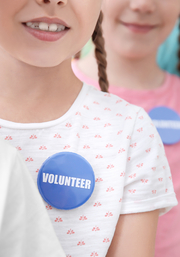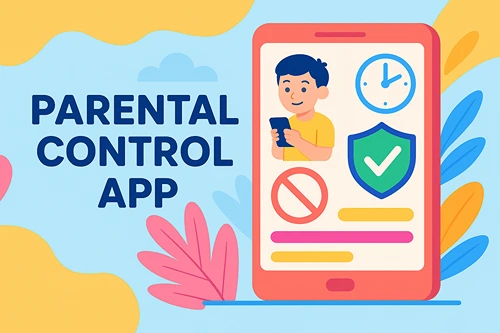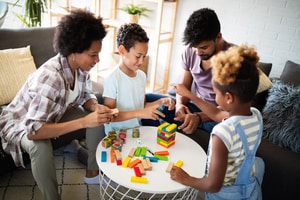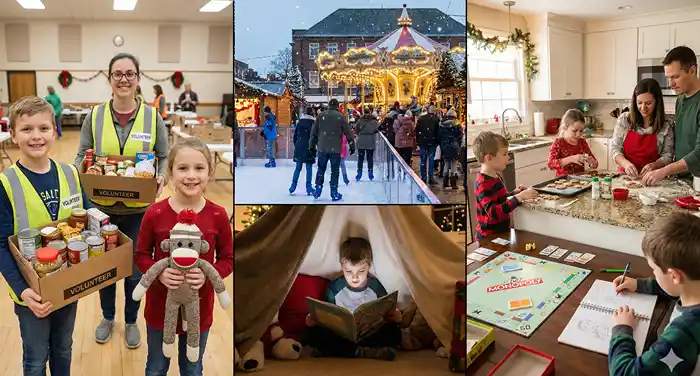Practical Ways to Incorporate Service Learning into Kids’ Lives
“What should young people do with their lives today? Many things. But the most daring thing is to create stable communities where the terrible disease of loneliness can be cured.” Kurt Vonnegut’s quote captures the essence of service learning—extending classroom lessons about compassion and civic duty into concrete actions that build community.
While schools rightfully prioritize academic rigor, dedicated time for volunteering, fundraising drives, and community improvement projects enrich children’s perspectives. The habits of empathy, teamwork, and concern for social welfare cultivated through acts of service swell far beyond the walls of academic institutions. They promise to shape a society where loneliness holds less sway.
Service Learning
Service Learning combines community service activities with thoughtful classroom reflection about real-world impacts. This pedagogical approach enriches learning while developing students’ civic consciousness and skills.
According to the Utah Education Network, critical objectives of service learning include:
- Promoting students’ responsibility to care for others.
- Fostering life skills like collaboration, problem-solving and communication
- Deepening understanding of academic subjects through practical application
- Nurturing resourcefulness and capacity to work for the greater societal good.
Research corroborates service learning’s benefits. Students demonstrate better mastery of course material, improved social skills, decreased behavioral issues, and heightened college/career readiness. These positive outcomes underscore why service merits broader emphasis beyond periodic school projects.
Why Service Learning Matters
Acts of service foster human qualities as essential as academic knowledge for children’s holistic development. Working cooperatively to make positive community change teaches empathy and moral reasoning while averting the pitfalls of isolated, screen-centric childhoods. Service’s imprint also spurs kids towards purpose and meaningful adult lives.
Building Empathy and Compassion
Experiential learning through serving food to people experiencing homelessness or building homes alongside future residents stretches children’s worldviews. They provide meaningful windows into how others live and a sense of efficacy in improving circumstances.
Additionally, reflecting afterward on emotions and preconceptions transformed builds compassion. In an increasingly polarized society, nurturing empathy across perceived divides promises to shape conscientious leaders of tomorrow—an invaluable outcome of service. Teaching kids how to respond with empathy during these experiences can further deepen their understanding and emotional growth.
Developing Civic Responsibility
When children participate in improving their community, the abstract ideal of civic duty transforms into a direct impact they can witness. Getting their hands dirty cleaning up local parks or recording books for vision-impaired library patrons helps youth recognize themselves as agents of change. The empowerment of united action carries forth as they mature into active citizens.
Encouraging Lifelong Service
Habits formed young, especially when infused with passion, often endure for decades. Lifelong volunteers frequently trace their motivation to transformative childhood service experiences. Whether participating in earthquake disaster response halfway around the world or volunteering weekends to support local refugees, early exposure to selfless contribution commonly ignites lasting dedication.
Practical Application of Service Learning
While single days devoted to prepackaged school service projects offer valuable introductions to serving, immersing children in consistent community change efforts provides the most profound lessons. Families coordinating recurring volunteer work woven into everyday life signals to kids that service is integral, not occasional.
Here are practical starting points:
1. Family Volunteer Opportunities
Research local organizations like food banks, animal shelters, or conservation groups offering family-friendly options. Schedule regular volunteer days.
Seek out family volunteering possibilities when traveling, too. It broadens cultural perspectives while uniting around universal values.
2. Community Projects
Brainstorm community needs that align with family passions, like organizing a playgroup for children with incarcerated parents if the justice system is a cause they care about.
Execute mini projects utilizing individual talents, from grant writing for supplies to project management and publicity through social media.
3. School-Community Collaboration
Rally student groups to amplify local volunteer events through peer mentorship. High schoolers can support elementary students visiting seniors’ homes, for example.
Encourage administrators to expand the service learning curriculum, integrating projects like recycling drives and community gardening into lessons.
4. Environmental Projects
Initiate neighborhood park, beach, or trail cleanup days. Add enriching elements like nature scavenger hunts afterward to integrate outdoor education.
Construct community gardens on school grounds or other public lands to nourish locals with fresh produce while teaching about nutrition, agriculture, and cooperation.
Service Learning at Summer Camps
The residential camp environment—removed from familiar technology and comforts—primes kids for collective growth. When service projects supplement traditional camp activities like hiking or arts and crafts, the completeness of the experience creates lasting impressions. Camps nurture community values and humanitarian instincts.
Service initiatives introduced at summer camps range from simple dining hall set-up to resident camper mentorship programs. Several camps also facilitate service learning trips so teens can assist at orphanages abroad or restore storm-damaged homes. You can search for an overnight summer camp with immersive programs that unite campers around shared goals, while exposing them to pressing social issues. Participants return home encouraged to continue volunteering.
Overcoming Challenges
While most families value service, packed schedules and restricting beliefs about children’s capabilities can limit involvement. Viewing service as supplemental rather than essential curtails opportunities. However, re-framing it as integral counteracts these barriers. Ask, “How CAN we make service happen?” instead of “Can we fit it in?” Solutions include:
1. Streamlining Logistics
Seek flexible volunteer work like assembling food bags or preparing mailings that allow varied commitment levels and timing. Identify age-appropriate expectations.
Take advantage of school community service days. Become active parent volunteer supporting coordinators.
2. Building Excitement
Highlight inspiring famous volunteers like Willie Nelson or Oprah to stoke passion.
Let children research causes meaningful to them and lead family volunteering. Ownership motivates!
Integrate hands-on visits to nonprofit sites like animal shelters into travel for tangible exposure to service organizations.
3. Embracing Family Service Days
Implement a weekly/monthly service outing for shared bonding while giving back. Rotate project types to accommodate interests.
Involve kids’ friends to magnify enthusiasm—frame service days as fun hangouts with rewarding activities.
Benefits for Parents
Beyond nurturing socially conscious, engaged children, committing as families to serve together also cements bonds and well-being for parents. Benefits include:
Family Bonding
Shared meaningful experiences build intimacy and pride in family identity. Children cherish the memories.
Modeling priorities like selflessness and community fosters continuity of values to pass down.
Purpose and Meaning
Watching children grow into thoughtful, proactive citizens gives parents’ lives profound purpose.
Seeing positive local change firsthand provides great fulfillment and an antidote to societal frustration.
Incorporating regular family service outings breeds both conscientious kids and tighter family units.
Reflection and Discussion
As the service learning curriculum includes classroom reflection, parents can enrich projects’ impacts by facilitating discussions afterward with kids. Essential questions include:
- How did what you witnessed make you think/feel differently?
- What surprised or inspired you about the experience?
- How were other volunteers’ stories compelling?
- What did you learn that you want to tell friends or remember forever?
Such purposeful debriefs help volunteering remain top-of-mind as transformational rather than passive. They consolidate new perspectives while identifying the following inspired actions.
Conclusion
Imagine communities brimming with citizens committed to eradicating loneliness and injustice. Students vote, launch nonprofits, hold companies accountable, and elevate humanity—no longer confined to hopes and dreams alone. This vision emerges real through dedicated youth service learning.
The work begins with families embracing projects embedded in everyday life, not restricted just to school. It crystallizes through summer camp experiences, stirring consciences and unveiling life directions fueled by empathy. In myriad ways, practical service learning beyond classrooms activates global progress, one compassionate, empowered child at a time.





